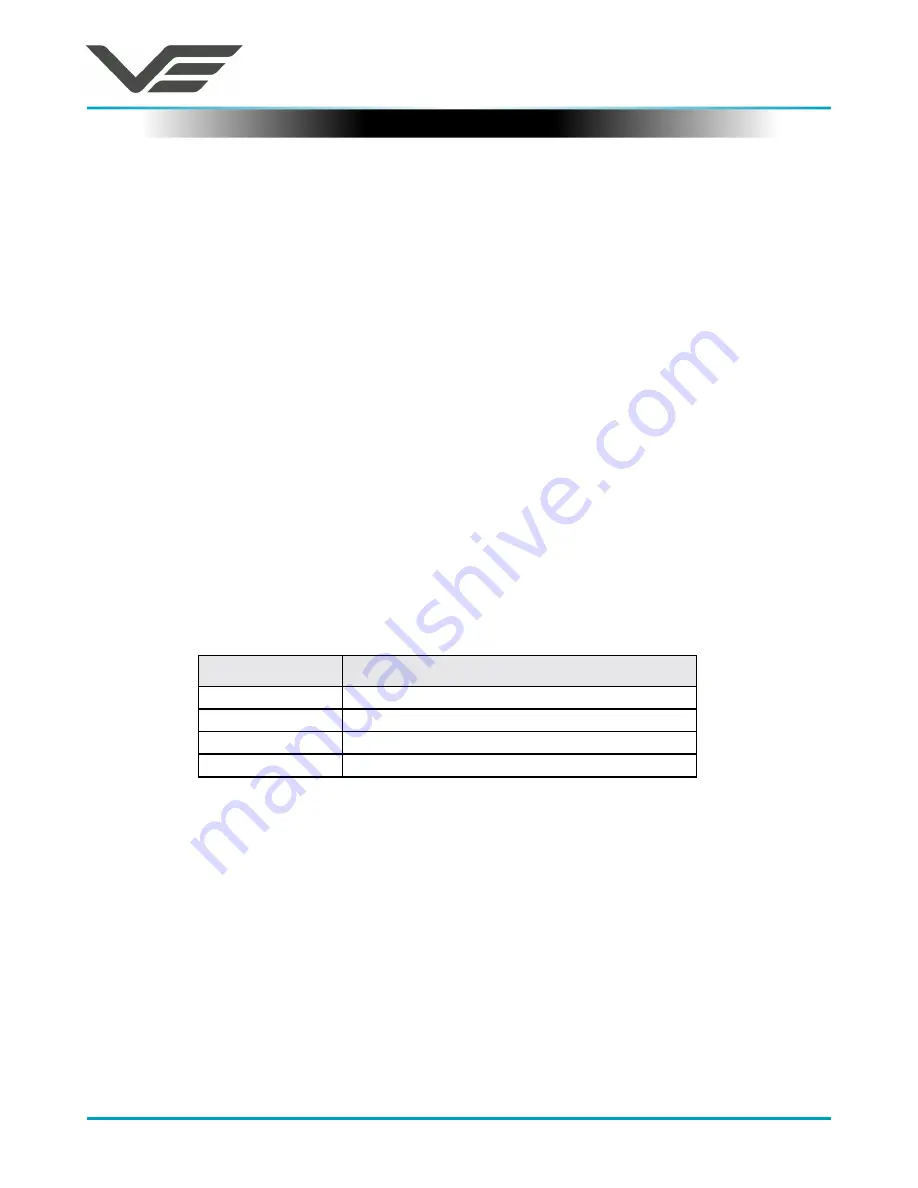
NTCS
April 2018
Visual Engineering
Video solutions. Integrated
visualengineering.co.uk
Page 16
4. Show Details Checkbox
5. Show Names
6. Display Pane
Colour
Meaning
Green
16 QAM mode – maximum data rate
Amber
QPSK mode – reduced data rate
Red
BPSK – lowest data rate passing between nodes
White
Link broken or not configured
Changing Frequency or Encryption Key in the System
When the
Show Details
box is checked the node information is expanded to show things like TX IP
Packets which are useful when diagnosing network problems.
When the
Show Names
box is checked the friendly names for the nodes are shown on the network
map display.
In the previous example the network display is selected. This gives a simple graphical view of the
nodes in the mesh and the links between them.
Note
: The buttons above the display are greyed out as they have no function when the
Network
radio button is selected.
Each node is shown as a circle with a white number. If the number turns red, then the node is
temporarily congested.
If the
Show Names
box is checked, the node name is displayed.
The links between the nodes are shown as coloured lines. As each node supports bi-directional
operation there are normally two lines for each link. Here is what the colours mean:
In the previous example there are static lines but when connected to a live system these lines
change as the state as the RF environment changes or nodes move about.
For users wishing to change the frequency channel or encryption key in the system, they must
check the ‘
Update All Nodes
’ box in the Global Settings page then press apply.
This feature ensures that all nodes are updated simultaneously. If this is not done then it is possible
to leave some nodes on one channel and some on another, rendering the system inoperable.
Once the ‘
Update All Nodes
’ tab is set, users can change the frequency or encryption key, both of
which can be found in the
Configuration
page.





























